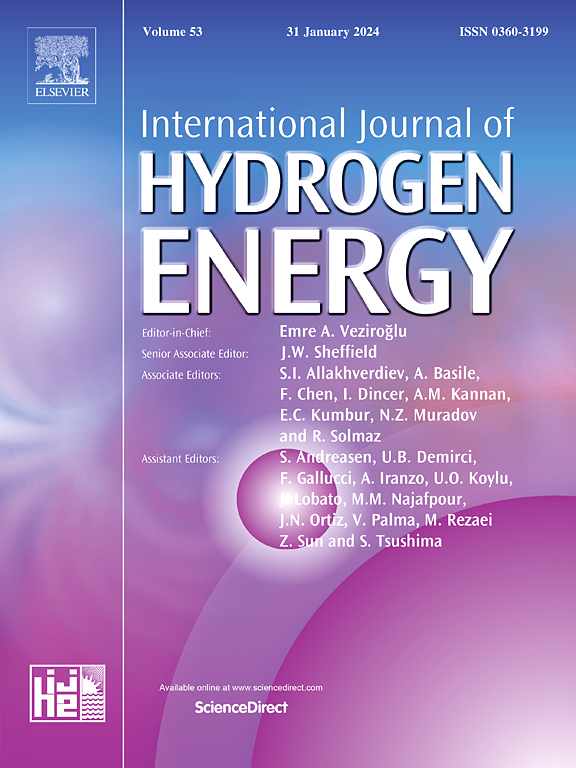Highly selective Hydrogen sensing by applying characteristic frequency at room temperature: Case study on TiO2–PdO hydrogen sensor
IF 8.1
2区 工程技术
Q1 CHEMISTRY, PHYSICAL
引用次数: 0
Abstract
We report highly selective and reliable room temperature H2 sensing using TiO2–PdO heterostructure thin film based chemiresistive sensors in comparison with PdO thin film sensor. Gas sensing studies show higher sensitivity and better selectivity towards H2 gas in the range 0.1 %–1% for TiO2–PdO heterostructure thin film sensor compared to PdO sensor. Based on gas analysis results of the surface species formed, H2 sensing mechanism is suggested. Temperature dependance of sensor response, repeatability, reproducibility, long term stability and humidity dependence studies at room temperature on TiO2–PdO sensor show satisfactory performance promising viability for portable, hand held H2 sensors. In addition to the advantages of heterostructure for better gas selectivity, increase in selectivity for room temperature sensor is shown using transient impedance measurements at characteristic frequency related to the target gas. Study suggests applying characteristic frequency measurements as a superior technique for obtaining high selectivity for portable H2 sensor.

求助全文
约1分钟内获得全文
求助全文
来源期刊

International Journal of Hydrogen Energy
工程技术-环境科学
CiteScore
13.50
自引率
25.00%
发文量
3502
审稿时长
60 days
期刊介绍:
The objective of the International Journal of Hydrogen Energy is to facilitate the exchange of new ideas, technological advancements, and research findings in the field of Hydrogen Energy among scientists and engineers worldwide. This journal showcases original research, both analytical and experimental, covering various aspects of Hydrogen Energy. These include production, storage, transmission, utilization, enabling technologies, environmental impact, economic considerations, and global perspectives on hydrogen and its carriers such as NH3, CH4, alcohols, etc.
The utilization aspect encompasses various methods such as thermochemical (combustion), photochemical, electrochemical (fuel cells), and nuclear conversion of hydrogen, hydrogen isotopes, and hydrogen carriers into thermal, mechanical, and electrical energies. The applications of these energies can be found in transportation (including aerospace), industrial, commercial, and residential sectors.
 求助内容:
求助内容: 应助结果提醒方式:
应助结果提醒方式:


